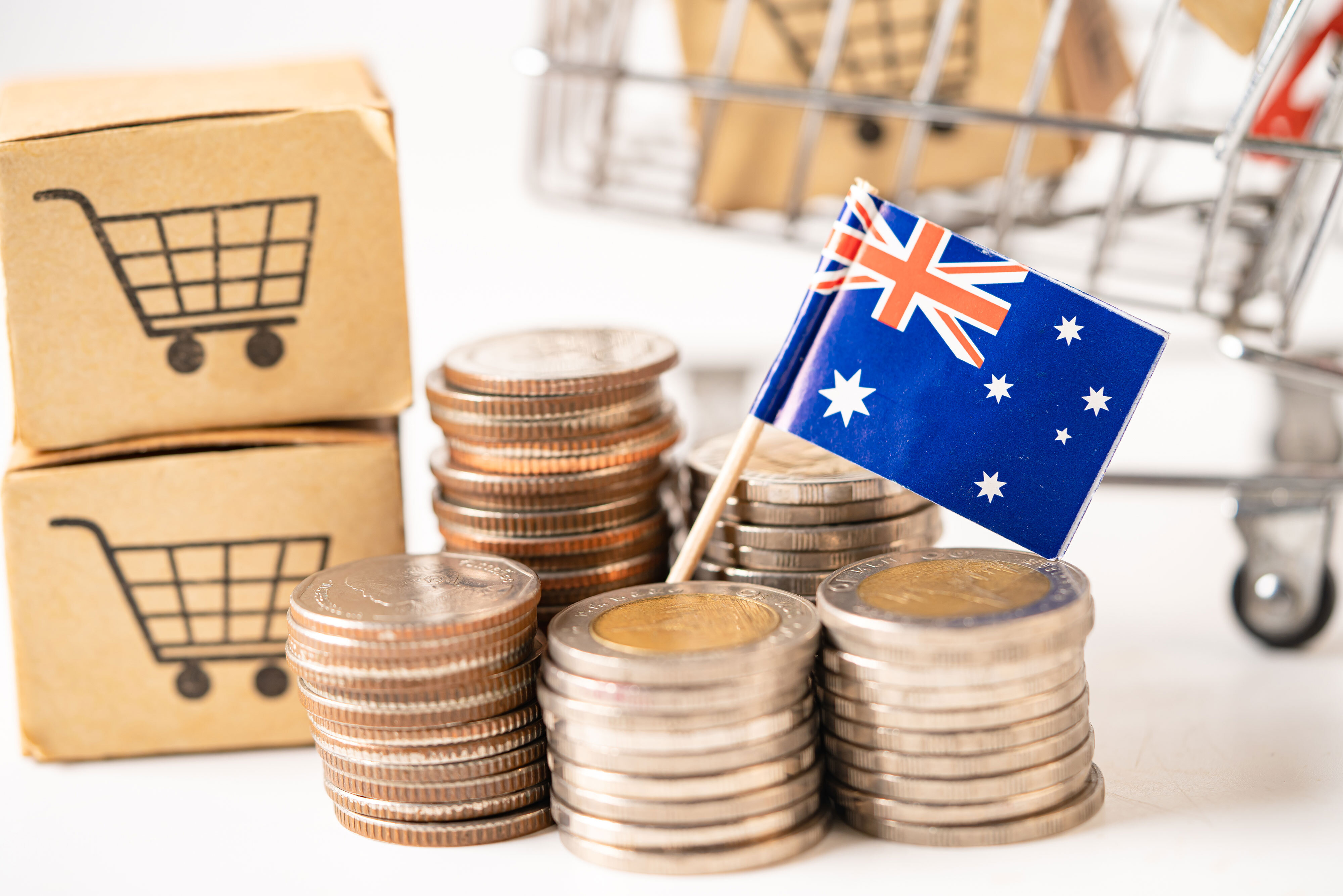Features > Property News & Insights > Market updates
Easing Inflation Dampens RBA Rate Hike Expectations

KEY POINTS
- The latest CPI figures show inflation in Australia is falling faster than expected
- This means the RBA is increasingly unlikely to raise the cash rate at its first board meeting for the year in early February
- The next move in interest rates could be down
The Reserve Bank of Australia (RBA) will almost certainly keep interest rates on hold at its first meeting for 2024, following the release of the latest inflation numbers.
The Australian Bureau of Statistics (ABS) monthly Consumer Price Index figures for November 2023 show annual inflation is falling faster than economists, financial markets, and the RBA itself had anticipated.
The figures show inflation in the 12 months to November 2023 rose 4.3%.

That’s down from a rise of 4.9% in the 12 months to October and below market expectations, with major banks like the CBA and Westpac predicting the November figure would come in at 4.4-4.5%.
It’s also the lowest monthly inflation figure since January 2022 - several months before the RBA began its long campaign of 13 consecutive hikes in the cash rate, in a bid to get runaway inflation back to the bank’s target range of 2-3%.
ANZ Senior Economist Catherine Birch says, “The key takeaway is that inflation is continuing to decline, and quite sharply in this month.”
Ms Birch points to the RBA’s own predictions of a 1% rise in the CPI over the final quarter of 2023.
She says the lower-than-expected result for November would now make it “quite difficult” for quarterly inflation to be high enough to meet the RBA’s own forecast.
“That suggests that we won't see a rate hike at their February meeting,” she says.
CBA economist Stephen Wu agrees.
“We think the RBA would consider today’s data an undershoot relative to their forecasts from November,” he says.
Other economists point to the large fall in the annual “trimmed mean” measure, which takes out more volatile items and tends to be the main inflation figure the RBA Board considers when setting interest rates.
That showed a large drop from 5.3% in October down to 4.6% in November.
Housing inflation remains a serious problem
The ABS says the most significant price rises came in the categories of Housing (+6.6%), Food and non-alcoholic beverages (+4.6%), Insurance and financial services (+8.8%) and Alcohol and tobacco (+6.4%).
Catherine Birch says a monthly jump in housing inflation of 0.7% reflects “the very tight housing market and the very low vacancy rates that we've got within Australia.”
“And I don't see those going away anytime soon…. so rent price growth is likely to remain elevated for some time.”
Rent price inflation had actually gone backwards in the months of October and September after a large increase in Commonwealth rent assistance.
The ABS says annual rent inflation would have been 1.7% higher if that assistance hadn’t flowed through to Australians on lower incomes.

“Also on the housing front, we saw construction costs of new dwelling accelerate a bit during the month as well, which I think, again, is just showing that there are some constraints in the sector,” Catherine Birch says.
“We want to build a lot more houses to be able to get more people into them and loosen the market a little bit and put some downward pressure on prices and rents, but that's still quite hard at the moment,” she told ABC News.
Black Friday not fully counted
One thing the latest monthly CPI figures will not take into account is the full impact of the increasingly popular Black Friday and Cyber Monday online sales towards the end of November.
That’s because the ABS only surveys many significant household goods in the first month of the December quarter (October), and these include footwear and accessories.
Retail sales figures out this week showed a lift of 2% in November, well above market expectations for a 1.2% gain.
Westpac’s economics team says the “outsized November growth implies a strong showing
from Black Friday sales”, but it notes this growth could be revised down in the future as the Bureau of Statistics has “identified an emerging preference among households to manage cost-of-living pressures by concentrating spending during periods of discounting.”
The bank also points out that what appears to be a strong retail sales outcome is not necessarily what it seems at first glance.
“With population growth tracking at 2.4% per year and retail price inflation running at 3.6% per year, that implies severe real per capita declines, in the realm of –3.5% to –4.0%.”
The upshot
Reacting to the monthly CPI numbers, Federal Treasurer Jim Chalmers said inflation was “higher than we would like it to be”, but the latest numbers “are encouraging.”
Stephen Miller, a market strategist at GSFM Australia, was more effusive:
“Whichever way you cut these numbers, they’re pretty good!” he said.
As for market traders?
Shortly after the release of the CPI data, they put the chances of the RBA raising rates again at its February meeting at just 2%.
There are three more key pieces of Australian economic data ahead of the RBA Board’s first meeting of the year, including the all-important quarterly inflation numbers for the 4th quarter of 2023, which will be released on the 31st of January.
But barring some major revision of data, worrying signs of inflation picking up again globally or lingering concerns about the “stickiness” of services inflation in Australia, it’s now likely the next rate move from the RBA will be down, not up.
Stay Up to Date
with the Latest Australian Property News, Insights & Education.




.png?width=292&height=292&name=Copy%20Link%20(1).png)
 SIGN UP FOR FREE NEWSLETTER
SIGN UP FOR FREE NEWSLETTER





.jpg?width=1920&height=1080&name=Warning%2c%20You%20Might%20Be%20Facing%20Higher%20Taxes%20Soon%20(1).jpg)





.png?width=1920&height=1080&name=Rate%20Drops%20Signal%20BIGGEST%20Property%20Boom%20in%20DECADES%20(1).png)

.jpg?width=1920&height=1080&name=Labor%20vs%20Liberal%20These%20Housing%20Policies%20Could%20Change%20the%20Property%20Market%20Forever%20(1).jpg)
.jpg?width=1920&height=1080&name=QLD%20Slashes%20Stamp%20Duty%20Big%20News%20for%20Investors%20%26%20Home%20Buyers%20(1).jpg)
.jpg?width=1920&height=1080&name=Trump%20Just%20Slapped%20Tariffs%20%E2%80%93%20Here%E2%80%99s%20What%20It%20Means%20for%20Australia%20(1).jpg)
.jpg?width=1920&height=1080&name=Federal%20Budget%202025%20More%20Debt%2c%20No%20Housing%20%E2%80%93%20Here%E2%80%99s%20What%20You%20Need%20to%20Know%20(1).jpg)
.jpg?width=1920&height=1080&name=Australias%20Housing%20Crisis%20is%20about%20to%20get%20MUCH%20Worse%20(New%20Data%20Warns).jpg)
%20(1).jpg?width=1920&height=1080&name=Australias%20RENTAL%20CRISIS%20Hits%20ROCK%20BOTTOM!%20(2025%20Update)%20(1).jpg)
%20(1).png?width=1920&height=1080&name=Is%20Adelaide%20Still%20a%20Good%20Property%20Investment%20(2025%20UPDATE)%20(1).png)
.jpg?width=1920&height=1080&name=RBA%20Shocks%20with%20Rate%20Cuts!%20What%E2%80%99s%20Next%20for%20Property%20Investors%20(1).jpg)
%20(1).jpg?width=1920&height=1080&name=I%20Predict%20The%20Feb%20Rate%20Cut%20(My%20Price%20Growth%20Prediction)%20(1).jpg)
.png?width=1920&height=1080&name=Why%20Property%20Prices%20Will%20Rise%20in%202025%20Market%20Predictions%20(1).png)
.jpg?width=1920&height=1080&name=Why%20Investors%20Are%20Choosing%20Apartments%20Over%20Houses%202%20(1).jpg)
.jpg?width=1920&height=1080&name=Why%20Rate%20Cuts%20Will%20Trigger%20A%20Property%20Boom%20(1).jpg)
.jpg?width=1920&height=1080&name=Retire%20On%202Million%20With%20One%20Property%20(Using%20SMSF).jpg)
.jpg?width=1920&height=1080&name=4%20Reasons%20Why%20You%20Should%20Invest%20in%20Melbourne%20Now%20(1).jpg)
%20(1).jpg?width=1920&height=1080&name=Old%20Property%20vs%20New%20Property%20(Facts%20and%20Figures%20Revealed)%20(1).jpg)
%20(1).jpg?width=1920&height=1080&name=Will%20The%20New%20QLD%20Govt%20Create%20a%20Property%20Boom%20or%20Bust%20(My%20Prediction)%20(1).jpg)
%20Scott%20Kuru%20(1).jpg?width=1920&height=1080&name=Inflation%20Hits%20Three-Year%20Low%20(Will%20RBA%20Cut%20Rates%20Soon)%20Scott%20Kuru%20(1).jpg)
.jpg?width=1920&height=1080&name=How%20to%20Buy%20Investment%20Property%20Through%20SMSF_%20The%20Ultimate%20Guide%20(1).jpg)
.jpg?width=1920&height=1080&name=Victoria%20Slashes%20Stamp%20Duty%20Melbourne%20Set%20to%20Boom%20Scott%20Kuru%20(1).jpg)
.png?width=1571&height=861&name=Are%20Foreign%20Buyers%20Really%20Driving%20Up%20Australian%20Property%20Prices%20(1).png)
.jpg?width=1920&height=1080&name=The%20Single%20Factor%20That%20Predicts%20Property%20Growth%20Regions%20(1).jpg)
%20Scott%20Kuru%20(1).jpg?width=1920&height=1080&name=My%20Prediction%20On%20Rates%20%26%20Negative%20Gearing%20(Market%20Crash)%20Scott%20Kuru%20(1).jpg)

-1.png?width=1920&height=1080&name=Major%20Banks%20Cut%20Rates%20Will%20RBA%20Follow%20Suit%20(Sept%20Rate%20Update)-1.png)
%20Scott%20Kuru-1.png?width=1920&height=1080&name=Rate%20Cut%20Coming%20What%20New%20Zealands%20Move%20Means%20for%20Australia%20(Sept%20Prediction)%20Scott%20Kuru-1.png)
%20(1).jpg?width=1920&height=1080&name=Buy%20when%20the%20interest%20rates%20are%20high!%20(Why%20you%20must%20buy%20now!)%20(1).jpg)
.jpg?width=1920&height=1080&name=Carms_Revised%20Taxes%20Due%20Aug%209%20YT%20Thumbnail02%20(1).jpg)
.jpg?width=1920&height=1080&name=Carms_Too%20Little%20Too%20Late%20Aug%207%20YT%20Thumbnail01%20(1).jpg)









.jpg?width=1920&height=1080&name=Carms_Rate%20Drop%20In%20July%20Jun%2010%20YT%20Thumbnail02%20(1).jpg)
.jpg?width=1920&height=1080&name=Carms_Own%20a%20Property%20V6%20Jun%205_YT%20Thumbnail%20(1).jpg)









.png?width=1920&height=1080&name=Artboard%201%20(3).png)






.jpg?width=1920&height=1080&name=YT%20thumbnail%20%20(1).jpg)

